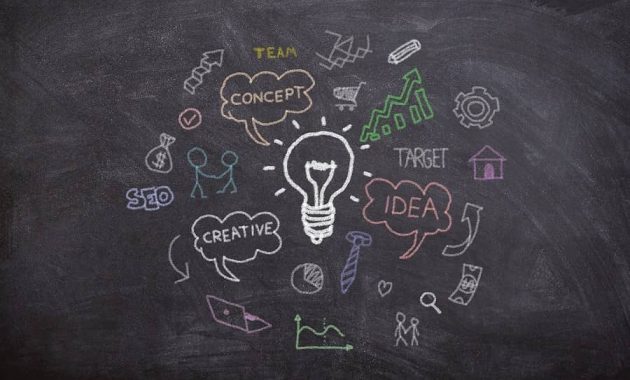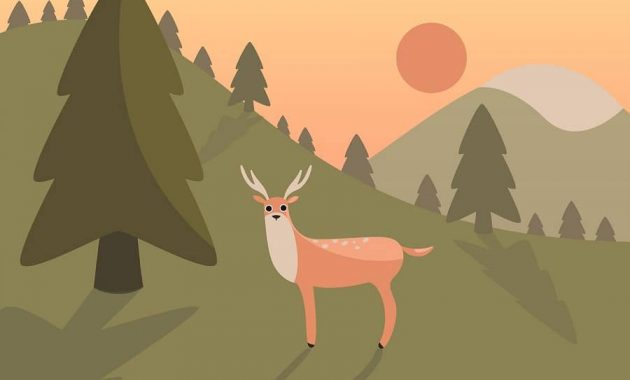220+ Interesting Science Trivia Questions and Answers
Do you love science? Do you love trivia quiz games? If you answered yes to both of those questions, then you’re in for a treat!
Scientists are constantly learning new things and revising old theories. That’s what makes science so interesting! One way to learn more about science is by testing your knowledge with trivia quizzes.
Here are some great science trivia questions and answers to get your brain going.
Easy Science Questions and Answers
Brass is an alloy of which two metals?
Answer: Copper and zinc
What was the first vaccine for?
Answer: Smallpox
Bronze is an alloy consisting primarily of what two elements?
Answer: Copper and Tin
How many elements are there in the periodic table?
Answer: 118
In terms of pH, what is ammonia?
Answer: Basic
NaCI is the chemical formula of which common substance?
Answer: Salt
Oncology focuses on what disease?
Answer: Cancer
Optics is the study of what?
Answer: Light
Penicillin is used to fight what type of infections?
Answer: Bacterial
The Ayers Rock in Australia is also known as what?
Answer: Uluru
The chemistry of carbon is known as what?
Answer: Organic chemistry
The innermost part of bones contains what?
Answer: Bone marrow
Water is made up of what two elements?
Answer: Hydrogen and oxygen
What color catches the eye first?
Answer: Yellow
What color has the longest wavelength in the visible spectrum?
Answer: Red
What condition is singultus?
Answer: Hiccups
What do you count on a tree to tell how old it is?
Answer: It’s rings
What does a conchologist collect?
Answer: Seashells
What element did Joseph Priestley discover in 1774?
Answer: Oxygen
What element is a diamond composed of?
Answer: Carbon
What is the formal name for climate studies?
Answer: Climatology
What is the most malleable metal?
Answer: Gold
What gives onions their distinctive smell?
Answer: Sulfer
What inorganic molecule is produced by lightning?
Answer: Ozone
What instrument is used for accurately measuring small amounts of liquid?
Answer: Pipette
What is a Geiger Counter used to measure?
Answer: Radiation
What is a scientist who specializes in the study of cells called?
Answer: Cytologist
What is another name for a tidal wave?
Answer: Tsunami
What is another name for the SA node in the heart?
Answer: Pacemaker
What is it called when a solid changes directly into a gas?
Answer: Sublimation
What is it called when an individual doesn’t offer to help someone in an emergency if there are other people present?
Answer: Bystander effect
What is it called when you make light change direction by passing it through a lens?
Answer: Refraction
What is so reactive with water that it has to be stored in oil because it will react with the air’s moisture?
Answer: Potassium
What is the “powerhouse of the cell?”
Answer: Mitochondria
What is the calm center part of a hurricane called?
Answer: Eye
What is the center of an atom called?
Answer: The nucleus
What is the chemical structure of magnesium sulfate?
Answer: MgSO4
What is the chemical symbol for lead?
Answer: Pb
What is the chemical symbol of gold?
Answer: Au
What is the electrical charge of a neutron?
Answer: No charge
What is the first phase of mitosis?
Answer: Interphase
What is the fourth planet from the sun?
Answer: Mars
Hard Science Trivia for High School

What is the freezing temperature of water?
Answer: 32 degrees Fahrenheit (0 degrees Celsius)
What is the name of a weather instrument used to measure atmospheric pressure?
Answer: A barometer
What is the name of the most recent supercontinent?
Answer: Pangea
What is the name of the process where plants lose water in the atmosphere?
Answer: Transpiration
What is the name of the world’s largest reef?
Answer: Great Barrier Reef
What type of lens is a magnifying glass?
Answer: Convex
In a nuclear reaction where the nucleus of an atom splits into smaller parts is called what?
Answer: Nuclear fission
A person who studies prehistoric life and fossils such as dinosaurs, is known as what?
Answer: Paleontologist
A unit of electromotive force is known as what?
Answer: Volt
By what name is Apatosaurus also widely known as?
Answer: Brontosaurus
What tree does aspirin come from?
Answer: Willow tree
At what temperature is Fahrenheit equal to Centigrade?
Answer: -40 degrees
At what temperature are Kelvin and Fahrenheit the same?
Answer: 574.25
Atoms of the same chemical element but with different atomic masses are known as what?
Answer: Isotopes
Botulinum toxin is commonly referred to as what?
Answer: Botox
The Japanese word “sakura” means the blossoming of what kind of tree?
Answer: Cherry tree
The movement of pollen from the anthers to a flower’s stigma is known as what?
Answer: Pollination
The process of pasteurization is named after which French microbiologist?
Answer: Louis Pasteur
What are the four primary precious metals?
Answer: Gold, silver, platinum, and palladium
What are the four states of matter?
Answer: Solid, liquid, gas, plasma
What are the three-time periods of the dinosaurs?
Answer: Triassic, Jurassic, and Cretaceous
What does “SPF” mean in sunscreen?
Answer: Sun Protection Factor
What flap on your windpipe helps keep out food particles?
Answer: Epiglottis
What is the process of breaking down food called?
Answer: Digestion
What is the programmed death cell process called?
Answer: Apoptosis
What is the scientific name for the job or role an organism plays in its habitat?
Answer: Niche
What is the scientific term for peeling skin?
Answer: Desquamation
What is the scientific word for push or pull?
Answer: Force
What is the second most abundant mineral in the human body?
Answer: Phosphorus
What is the shape of DNA known as?
Answer: A double helix
What is the smallest named time interval?
Answer: Planck time
What is the splitting of atomic nuclei called?
Answer: Nuclear Fission
What is the sticky part of the pistil called?
Answer: Stigma
What is the study of plant life called?
Answer: Botany
What is the study of the interaction or relationship of living organisms to one another?
Answer: Ecology
What is the sun mostly made up of?
Answer: Hydrogen
What is the symbol of the element silver?
Answer: Ag
Mycology is the scientific study of what?
Answer: Fungi
General Knowledge Science Questions and Answers

What is the tallest type of grass?
Answer: Bamboo
What is the world’s largest Hydroelectric Power Plant?
Answer: Three Gorges Dam
What islands were extensively studied by Charles Darwin?
Answer: Galapagos Islands
What kind of energy does an unlit match have?
Answer: Chemical energy
What metal is the best conductor of electricity?
Answer: Silver
What ongoing process allows water to be constantly recycled?
Answer: Water Cycle
What reaction releases energy into its surroundings?
Answer: Exothermic reaction
What scale is used to measure the hardness of minerals?
Answer: Mohs scale
What scientist proposed the theory of continental drift?
Answer: Alfred Wegener
What type of bond involves the sharing of electron pairs between different atoms?
Answer: Covalent
What type of bond is present in a water molecule?
Answer: Hydrogen Bond
What type of cell division results in two four daughter cells, each with half the number of chromosomes in the parent cells?
Answer: Meiosis
What was the first sound-recording device called?
Answer: Phonograph
What’s the study of materials at very low temperatures?
Answer: Cryogenics
When a gas changes into a liquid, it is called what?
Answer: Condensation
Where is the world’s most active volcano located?
Answer: Hawaii
Which component of an atom might you expect to be orbiting around it?
Answer: Electrons
Which form of energy can we see with the naked eye?
Answer: Light
Which of Newton’s Laws states that ‘for every action, there is an equal and opposite reaction?’
Answer: The third law of motion
Which person is known for publishing “The Interpretation of Dreams”?
Answer: Sigmund Freud
Which psychological concept did Pavlov’s dog help him describe?
Answer: Conditioning
Which two elements on the periodic table are liquids at room temperature?
Answer: Mercury and Bromine
Who begins food chains?
Answer: Producers
Who first proposed the concept of contact lenses?
Answer: Leonardo da Vinci
Who formulated the theory of evolution in his book, The Origin of Species?
Answer: Charles Darwin
Who invented the microscope?
Answer: Zacharias Janssen
Who is considered the “father” of organic chemistry?
Answer: Friedrich Wöhler
Who is the father of modern taxonomy?
Answer: Carolus Linnaeus
Who split the atom?
Answer: Ernest Rutherford
Who was the first man to see bacteria?
Answer: Antony Leeuwenhoek
Who was the inventor of the first battery?
Answer: Alessandro Volta
Science Trivia About Human Body

What is a single piece of coiled DNA known as?
Answer: Chromosome
A change of the DNA in an organism that results in a new trait is known as a?
Answer: Mutation
What enzyme in the human mouth helps digest carbohydrates?
Answer: Salivary Amylase
Diabetes develops as the result of a problem with which specific organ in the body?
Answer: Pancreas
How many chambers make up the human heart?
Answer: Four
How many vertebrae in the human spine?
Answer: 33
In which part of the body are the ossicles found?
Answer: The ear
Specialized cells are called photoreceptors. What are the 2 types of photoreceptors in the retina called?
Answer: Rods and cones
Syncope is the medical name for what condition?
Answer: Fainting
The Arrector Pili muscles are responsible for what phenomenon?
Answer: Goosebumps
The small intestine is made up of jejunum, ileum, and what?
Answer: Duodenum
The smallest bones in the body are located where?
Answer: The ear
What are the chewing teeth called?
Answer: Incisors
What enzyme in the human mouth helps digest carbohydrates?
Answer: Salivary Amylase
What are the four types of adult human teeth?
Answer: Incisors, canines, premolars, molars
What are the gaps between nerve cells called?
Answer: Synapses
What are the lower chambers of the human heart called?
Answer: Ventricles
What are the muscles found in the front of the thighs are known as?
Answer: Quadriceps
What disease stems from the medieval term that means ‘bad air’?
Answer: Malaria
What does the ER of a cell stand for?
Answer: Endoplasmic Reticulum
What does the gall bladder secrete?
Answer: Bile
What does the human lacrimal gland produce?
Answer: Tears
What does the term ‘PCR’ stand for?
Answer: Polymerase chain reaction
What is made by white blood cells to help fight off infection?
Answer: Antibodies
What is the average life cycle of a red blood cell?
Answer: 120 days
What is the fattiest human organ?
Answer: Brain
What is the inflammation of the liver called?
Answer: Hepatitis
What is the largest internal organ of the human body?
Answer: Liver
What is the largest nerve in the human body?
Answer: Sciatic
What is the long pipe’s name that moves food from the back of the throat down to the stomach?
Answer: The esophagus
What is the main structural molecule in hair and nails?
Answer: Keratin
What is the medical term for bad breath?
Answer: Halitosis
What is the name of the biggest part of the human brain?
Answer: The cerebrum
What is the only bone in the human body that isn’t attached to another bone?
Answer: Hyoid bone
What is the rarest blood type?
Answer: AB-
What is the smallest organ in the human body?
Answer: Pineal gland
What part of the body are low-density lipoproteins most likely to clog?
Answer: Arteries
What part of the brain controls hunger?
Answer: Hypothalamus
What part of the brain deals with hearing and language?
Answer: Temporal lobe
What part of the brain is responsible for vision?
Answer: Occipital
What part of the human body is the axilla?
Answer: The armpit
What sense is most closely linked to memory?
Answer: Smell
Where on the human body are the most sweat glands?
Answer: Bottom of the feet
Physics Science Questions and Answers

The study of the weather is called what?
Answer: Meteorology
The wire inside an electric bulb is known as what?
Answer: Filament
Electric current is measured using what device?
Answer: Ammeter
The study of human remains is called what?
Answer: Archaeology
Electric power is typically measured in what units?
Answer: Watts
What is the quality of an object that allows it to float on water?
Answer: Buoyancy
Electric resistance is typically measured in what units?
Answer: Ohms
How do you calculate density?
Answer: Density is mass divided by volume
How long is an eon?
Answer: A billion years
In terms of computing, what does CPU stand for?
Answer: Central Processing Unit
What layer of the Earth is right below the crust?
Answer: Mantle
In terms of engineering software, what does CAD stand for?
Answer: Computer-Aided Design
Mechanical engineer Wilhelm Conrad Roentgen was from what country?
Answer: Germany
What number on the Richter scale does an earthquake have to reach to be considered major?
Answer: 7
Someone who studies earthquakes is known as what?
Answer: Seismologist
Substances that don’t conduct heat are known as what?
Answer: Insulators
The deepest point in all of the world’s oceans is named what?
Answer: Mariana Trench
The earth has three layers that are different due to varying temperatures. What are its three layers?
Answer: Crust, mantle, and core
The first vaccine was for which disease?
Answer: Smallpox
The metamorphism of what rock forms marble?
Answer: Limestone
The process of weathered material moving due to gravity is called what?
Answer: Erosion
What procedure known for sound navigation?
Answer: Sonar
What country experiences the most tornadoes?
Answer: United States
What do you call molten rock before it has erupted?
Answer: Magma
What does ‘E’ represent in E=MC2?
Answer: Energy
What does ‘NMR’ stand for?
Answer: Nuclear Magnetic Resonance
What gas is essential in the production of fertilizers and light bulbs?
Answer: Nitrogen
What gas makes soda bubbly?
Answer: Carbon Dioxide
What gas makes up most of the atmosphere of Mars?
Answer: Carbon Dioxide
What instrument do you use to measure wind speed?
Answer: Anemometer
What is a unit that measures force?
Answer: Newtons
Animal Trivia Questions with Answers

What estimated percentage of animal species are invertebrates?
Answer: 95%
Dolly was the first-ever living creature to be cloned. What type of animal was she?
Answer: Sheep
Frogs belong to which animal group?
Answer: Amphibians
How many bones are in a giraffe’s neck?
Answer: Seven
How many bones do sharks have?
Answer: Zero
How many cervical vertebrae are there in the typical human body?
Answer: Seven
What animal is the closest living relative of a human?
Answer: Chimps and bonobos
What is the fin on the backs of fish, some whales, and dolphins called?
Answer: Dorsal Fin
What is the largest known land animal?
Answer: Elephant
What is the name of the red pigment found in vertebrates that functions in oxygen transport?
Answer: Hemoglobin
What is the leader of a herd of elephants called?
Answer: Answer: Matriarch
A group of cats is called what?
Answer: A clowder
Which animal has the thickest fur of any mammal?
Answer: Sea otter
The actual age of a lion can be determined from its what?
Answer: Nose
Where on the body of crab’s can you find the taste buds?
Answer: Its feet
Which animal baby can gain up to 250 pounds per day?
Answer: Blue Whale
What four common species of animals die soon after giving birth?
Answer: Squid, Octopus, Salmon, and common Mayfly
Which mammal in the world has the most powerful bite?
Answer: Hippopotamus
Which large animal has a tail so strong that it can stand on it and lift its hind legs off the ground?
Answer: The Kangaroo
Belgian Blue and Belted Galloway are breeds of which animal?
Answer: Cow
Which bird has eyes that are bigger than its brain?
Answer: Ostrich
What do you call a group of camels?
Answer: A caravan
Which aquatic mammal has the most extended lifespan?
Answer: Bowhead whale
Which bird is considered the fastest?
Answer: Peregrine falcon
How many heart chambers does a cockroach have?
Answer: 12
What happens if a shark stops swimming?
Answer: They die because they would stop receiving oxygen
A baby swan is called a what?
Answer: Cygnet
A rhinos horn is made of what?
Answer: Keratin
What is the Spanish for bear?
Answer: Oso
What is a group of jellyfish called?
Answer: A Smack
What is a group of zebras called
Answer: A Dazzle
What is a group of crocodiles on land called?
Answer: Bask
What is a group of crocodiles in water called?
Answer: Float
What is a group of wolverines called?
Answer: A Pack
What is a group of elephants called?
Answer: Herd
What is a group of tigers called?
Answer: A streak of tigers or Ambush of tigers
What group of animals is called an embarrassment?
Answer: Pandas
Science Trivia Questions and Answers PDF
See also:






